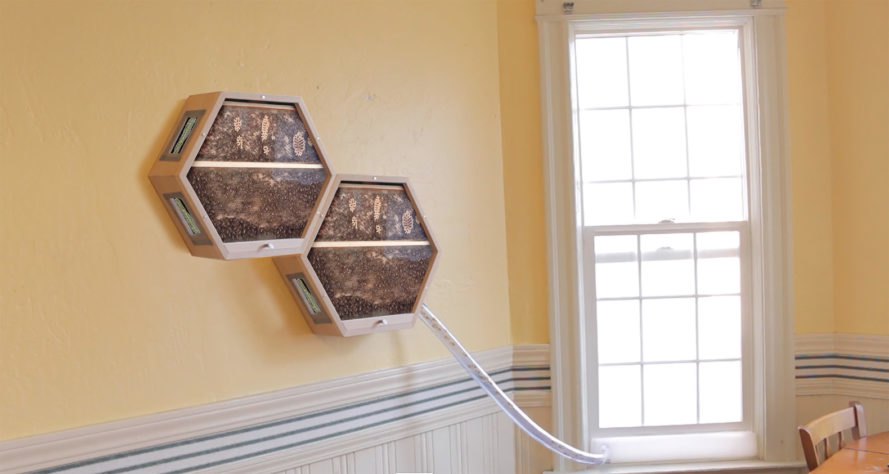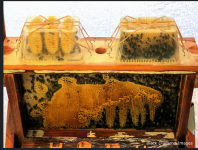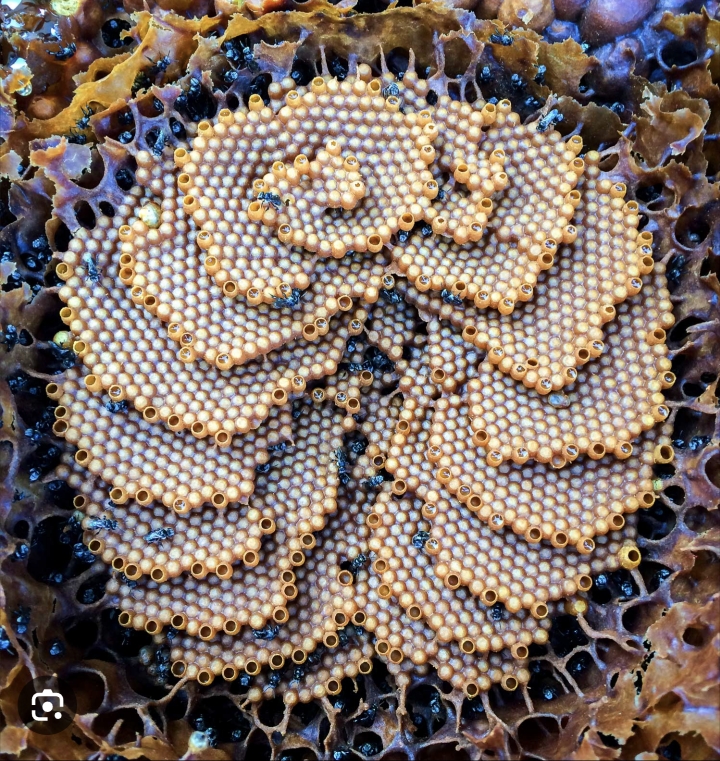One thing that takes some skill and practice is to be able to identify the one queen among thousands of bees and tell the difference between drones and workers.
In this pic, the queen is circled in pink. Note her abdomen is longer than the other worker bees and her thorax (middle body section) is smooth and shiny rather than fuzzy. The drones (males) are circled in blue. Note their bodies are bigger and somewhat blocky, and their eyes are bigger, taking up the scace of most of their head. The rest of the bees are workers (female).
Note the four bees circled in orange have different patterns and colors. This goes back to the fact that there are different breeds of bees and a colony will actually be made of of a mix of different breeds, and each individual bee, can also be a cross breed.
The queen will mate with 15-20 different drones, and each drone has his own genetics and can be a different breed. She only mates at one time in her life (over the course of about a week). She stores the sperm from all of them in one storage pouch. When she lays an egg that is destined to be a Drone, it is unfertilized, so his genetics (and breed) will be identical to the queen. But if she lays an egg that is destined to be a worker, she will fertilize it as it is laid and it will be fertilized by a random selection of sperm from all the males she was with. Their breed will be a mix of the two. Bee farms can specialize in breeding certain breeds and when you buy them, they will likely be a pure breed throughout the hive. But the next time the queen gets replaced, and she goes off to mate, she will bring other genetics back into the hive and it will start having crosses.

Now the difference between the queen, workers, and drones seems obvious when pointed out in the above pic, but imagine looking at a frame full of thousands of bees and trying to identify them. And a hive will have 10-20 frames in it, and there's only one queen. So it can be a challenge to locate her if you need to.

One thing beekeepers can do to help identify their queen quicker is to mark them. They do this with a little dab of paint (usually from a paint marker), or sometimes with a numbered sticker. Queens can live up to 5 years, so knowing how old your queen is, is very helpful. Also, if you've marked your queen, and then you go to check your hive and find that your queen is unmarked, then you know your queen has been replaced with a new one. (there's a few different ways and reasons this happens). Marking queens, without hurting them, is a skill and artform all to itself.


There's actually a standardized color code for marking your queens based on the year they were born.












